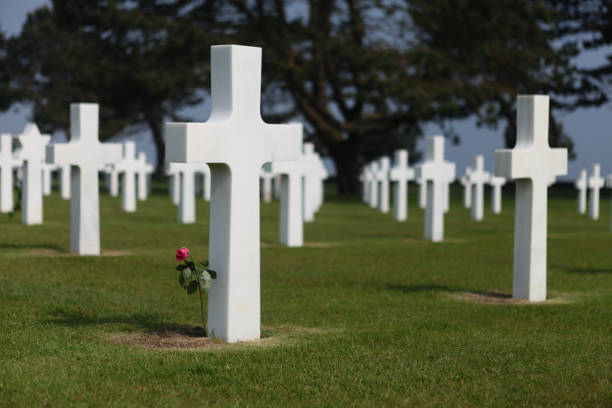Headstones Stand Monuments and Different Cultural Beliefs

Headstones stand monuments are permanent memorials that display the names, dates, and sometimes symbolic inscriptions that convey the spirit of the deceased. In addition to serving a practical purpose, headstones often represent the cultural values and beliefs of the communities where they are located. These monuments, found throughout ancient and modern times, offer information about how different cultures perceive death, the afterlife, and the legacy of the deceased.
Headstone Monuments and Grave Marking – The Connection
Throughout history, even in ancient civilizations, headstone monuments served as a way to mark burial sites. People used stones, urns, and even pyramids to identify the final resting places of their loved ones. The most famous example of this practice is the use of pyramids as tombs for pharaohs and high-ranking individuals. This tradition existed because the concept of headstones did not yet exist.
How Headstones Stand Monuments Reflect Cultural Beliefs
Headstones play an important role in religious ceremonies such as burial. Each religion and culture has different headstones and practices, but the common aim is to pay respect and tribute to the deceased. Here are six ways headstone monuments reflect cultural beliefs:
Symbolism
On headstones, you will find many symbols that convey deep cultural and religious meanings, reflecting the beliefs of the deceased. For instance, in Christian culture, the most common symbol is the cross, representing the sacrifice of Jesus and the belief in resurrection. The presence of the cross also signifies the belief in the afterlife. Throughout history, people have adorned headstones with different types of crosses, such as Latin, Celtic, and crucifixes. On the other hand, in Jewish traditions, people inscribe the Star of David on headstones. This is their way to honor the dead and convey the message that the deceased is in the protection of the divine.
Other than this, individuals also carve animals, angels, and floral motifs on headstones. For example, the dove symbolizes peace or the Holy Spirit in Christianity, so many people carve it on headstones. They also use blooming and wilting flowers and vines to reflect the cycle of life and death and how nature works in a way that those who have come to earth have to return to their Higher Power.
Inscriptions
Many headstones stand monuments also have texts written on them that are not only deeply personal but also reflect cultural beliefs. These inscriptions talk about life, remembrance, and how death is inevitable. For example, many headstones have verses from holy scriptures or religious prayers written on them. For example, in a Christian cemetery, you will find verses from a Psalm such as “He who dwells in the shelter of the most high will abide in the shadow of almighty” or “The Lord is my shepherd.” Or to provide strength and courage to the loved ones who are grieving, some people inscribe, “I have fought the good fight, I have finished the race, I have kept the faith.”
Apart from religious texts, some cultures choose to pay tribute to the deceased with poetic verses that match and reflect the personality and life philosophy of the deceased. For example, to show that the deceased lived an adventurous life, people can write, “Two roads diverged in a wood, and I— I took the one less traveled by.”
Material Choice
Did you know that the material chosen for headstones reflects cultural preferences and traditions? For instance, in many Western cultures, marble is commonly used because of its elegance and durability, which allows for complex carving and inscriptions. However, granite is becoming more popular due to its similar durability.
Shapes, Size, and Style
If you take a close look at cultures, you will see that every culture has different shapes, sizes, and styles of headstones stand monuments. For example, in some cultures, people prefer simplicity to reflect humility and practicality. In many Protestant cemeteries, you will find simple flat headstones, whereas in Jewish culture, you will find headstones that are horizontal rectangular slabs.
Placement and Orientation
Even the placement of the headstones holds cultural and spiritual significance. Traditionally, Christian graves are placed like the head faces the west while the feet face the east. This symbolizes the Jesus’s second coming.
Evolution Over Time
The changes that we witness in headstones also show the change and shift in cultural attitudes and practices. Back in the Victorian era, people used to build elaborative headstones with complex carvings and epitaphs to show their fascination with death and mourning. However, in recent times, people are opting for minimal designs that reflect contemporary values of simplicity. Now, headstones stand monuments feature clean lines, simple texts, and quotes that show the deceased’s interests and personality.
Wrap Up
Headstones stand monuments have functioned as more than just grave markers throughout history; they are physical representations of cultural values, beliefs, and attitudes regarding dying and remembering the dead. From the lavish interiors of the old pyramids to the minimalism of contemporary green funerals, these monuments are ever-evolving, mirroring the shifting fabric of human culture and belief.
To capture the essence of your loved one in their remembrance, get in touch with Southern Stone Monuments.
Headstones stand monuments are permanent memorials that display the names, dates, and sometimes symbolic inscriptions that convey the spirit of the deceased. In addition to serving a practical purpose, headstones often represent the cultural values and beliefs of the communities where they are located. These monuments, found throughout ancient and modern times, offer information about how different cultures perceive death, the afterlife, and the legacy of the deceased.
Headstone Monuments and Grave Marking – The Connection
Throughout history, even in ancient civilizations, headstone monuments served as a way to mark burial sites. People used stones, urns, and even pyramids to identify the final resting places of their loved ones. The most famous example of this practice is the use of pyramids as tombs for pharaohs and high-ranking individuals. This tradition existed because the concept of headstones did not yet exist.
How Headstones Stand Monuments Reflect Cultural Beliefs
Headstones play an important role in religious ceremonies such as burial. Each religion and culture has different headstones and practices, but the common aim is to pay respect and tribute to the deceased. Here are six ways headstone monuments reflect cultural beliefs:
Symbolism
On headstones, you will find many symbols that convey deep cultural and religious meanings, reflecting the beliefs of the deceased. For instance, in Christian culture, the most common symbol is the cross, representing the sacrifice of Jesus and the belief in resurrection. The presence of the cross also signifies the belief in the afterlife. Throughout history, people have adorned headstones with different types of crosses, such as Latin, Celtic, and crucifixes. On the other hand, in Jewish traditions, people inscribe the Star of David on headstones. This is their way to honor the dead and convey the message that the deceased is in the protection of the divine.
Other than this, individuals also carve animals, angels, and floral motifs on headstones. For example, the dove symbolizes peace or the Holy Spirit in Christianity, so many people carve it on headstones. They also use blooming and wilting flowers and vines to reflect the cycle of life and death and how nature works in a way that those who have come to earth have to return to their Higher Power.
Inscriptions
Many headstones stand monuments also have texts written on them that are not only deeply personal but also reflect cultural beliefs. These inscriptions talk about life, remembrance, and how death is inevitable. For example, many headstones have verses from holy scriptures or religious prayers written on them. For example, in a Christian cemetery, you will find verses from a Psalm such as “He who dwells in the shelter of the most high will abide in the shadow of almighty” or “The Lord is my shepherd.” Or to provide strength and courage to the loved ones who are grieving, some people inscribe, “I have fought the good fight, I have finished the race, I have kept the faith.”
Apart from religious texts, some cultures choose to pay tribute to the deceased with poetic verses that match and reflect the personality and life philosophy of the deceased. For example, to show that the deceased lived an adventurous life, people can write, “Two roads diverged in a wood, and I— I took the one less traveled by.”
Material Choice
Did you know that the material chosen for headstones reflects cultural preferences and traditions? For instance, in many Western cultures, marble is commonly used because of its elegance and durability, which allows for complex carving and inscriptions. However, granite is becoming more popular due to its similar durability.
Shapes, Size, and Style
If you take a close look at cultures, you will see that every culture has different shapes, sizes, and styles of headstones stand monuments. For example, in some cultures, people prefer simplicity to reflect humility and practicality. In many Protestant cemeteries, you will find simple flat headstones, whereas in Jewish culture, you will find headstones that are horizontal rectangular slabs.
Placement and Orientation
Even the placement of the headstones holds cultural and spiritual significance. Traditionally, Christian graves are placed like the head faces the west while the feet face the east. This symbolizes the Jesus’s second coming.
Evolution Over Time
The changes that we witness in headstones also show the change and shift in cultural attitudes and practices. Back in the Victorian era, people used to build elaborative headstones with complex carvings and epitaphs to show their fascination with death and mourning. However, in recent times, people are opting for minimal designs that reflect contemporary values of simplicity. Now, headstones stand monuments feature clean lines, simple texts, and quotes that show the deceased’s interests and personality.
Wrap Up
Headstones stand monuments have functioned as more than just grave markers throughout history; they are physical representations of cultural values, beliefs, and attitudes regarding dying and remembering the dead. From the lavish interiors of the old pyramids to the minimalism of contemporary green funerals, these monuments are ever-evolving, mirroring the shifting fabric of human culture and belief.
To capture the essence of your loved one in their remembrance, get in touch with Southern Stone Monuments.
